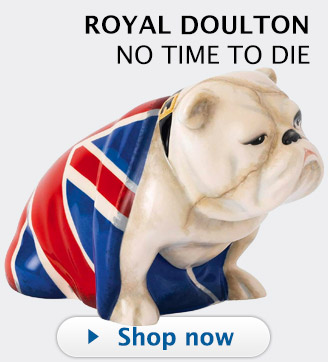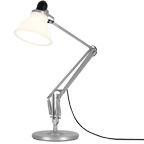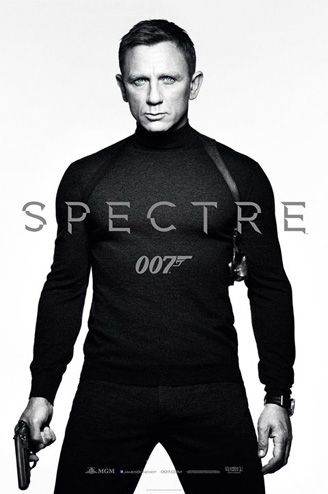The Spy Who Came out of the Closet - Part 3
Living the life and becoming a man of the cloth.
 Those of you familiar with these articles will hopefully have read parts 1 & 2 of this series; they'll provide a better understanding of the history of Bond and Fleming's tailoring throughout the novels and films and much of what follows will refer to information from the earlier articles, as well as drawing on a couple of the recent postings I've made on AJB007.co.uk and other forums.
Those of you familiar with these articles will hopefully have read parts 1 & 2 of this series; they'll provide a better understanding of the history of Bond and Fleming's tailoring throughout the novels and films and much of what follows will refer to information from the earlier articles, as well as drawing on a couple of the recent postings I've made on AJB007.co.uk and other forums.
Read The Spy Who Came Out of the Closet Part 1 and Part 2.
And if you did read those articles two years ago, you'll no doubt be one of the chorus of voices asking:
"Why so long for part three?"
The clothes Bond wears and the other lifestyle items he chooses are far more than an incidental part of the novels; the choice of brands Fleming attributed to his characters and the character's attitudes towards those products is an intrinsic part of what makes the books unique and inextricably entwined with the writer himself.
The natural path for the third part of this series to follow might be to laboriously list the various sources for Fleming and Bond's (literary and celluloid) other wardrobe choices, but much of this information is now in the public domain - most notably from the indefatigable Gary Giblin's excellent book James Bond's London or Benson's Bedside Companion - and over the past couple of years many of you may have made a fairly comprehensive list from the various posts I've made on the forum.
Those who just want a quick reference guide to the various items that have been used can skip straight to part 4 of this series where I'll discuss many of the products, but I'd urge any of you with more than a casual interest to dig deeper, beyond the brand names and labels and into the area of trying to unravel some of the psyche and philosophy behind their choice and use. This article's purpose is not only to catalogue the original items, but to understand why they were chosen and how you can apply the same criteria to all those items that are either not featured, are budget alternatives to the established choices, or are the modern-day equivalents to some of the now-unobtainable brands.
Part 3: Living the life and becoming a man of the cloth
What is Bond Style?
Over the years there have been numerous books and articles published regarding what constitutes 'Bond Style'. Most simply regurgitate current thinking and very broad terms on what passes for dressing well, while adding the odd reference to a vodka martini here and there - and who can really blame them? With so many films and continuation novels, combined with more than five different actors and goodness knows how many different directors, producers and wardrobe advisors all chipping-in their ideas - how can one possibly know what's right? Very few of those guides have attempted an investigation into Fleming's philosophy on the subject and what he was trying to achieve in Bond, and I'm afraid that those of you unfamiliar with the original novels will only be able to go part of the way into gaining a deeper understanding of the author and his character. There's no substitute for the original text, so to really grasp the essence of what's involved you're going to have to knuckle down and read the books - at least some of them. You might even enjoy it.
Are the clothes really that important - would it really have mattered if Fleming had dressed his hero in Jeans and a T-shirt? Yes, it would; clothing obviously communicates a lot of messages about it's wearer, but the clothes themselves form only a part of the way in which the author presented this aspect of his character development. The brand names he associated with any of his characters not only tap into our subconscious and deep seated prejudices towards them, but cleverly, Fleming was able to present identical products or brands (Lippe and Bond's Bentleys, for instance) and manipulate our opinion for or against the user, depending on the context in which they were used. I'll explore this more fully in the next chapter, but lets concentrate on the character of Bond for a moment.
Fleming was attempting to do something unique with his hero; in his James Bond Dossier, Kingsley Amis introduces us to the concept of 'the man who is only a silhouette'. His central argument focuses on the principle that Fleming wanted to create a completely anonymous figure in Bond, one on whom the reader could project his own image. This is a fascinating chapter and one I wholeheartedly recommend, but Amis only goes so far and his arguments set me thinking further. The original novels pull off the clever trick of presenting the character as a man of taste and sophistication, but without giving him any of the obvious negative associations of wealth; Bond is by no means a rich man in the original novels (something the recent films and various articles on 'Bond Style' seem to have forgotten), the more lavish aspects of his lifestyle are usually enjoyed at the expense of others or presented in a way that implies they're a hard-earned 'treat' (his cars, for instance), and in this way the reader is still able to identify with him while simultaneously enjoying the 'high-life'.
But there's one vital ingredient that they all seem to have missed...
Fleming and inverted snobbery
Fleming's snobbish comments and attitudes on many subjects are well-documented from biographies and interviews with the man. But he wasn't just a snob; he was a public school educated Englishman, with pre-war values entrenched with a yearning for the Empire and aristocracy. And if there's one thing that's engrained in a traditional Englishman's values, it's that he'd quite possibly rather die than overtly display his wealth - "It's simply not done old chap". No matter how wealthy the British aristocrat, there will be a display of inverted snobbery in the form of shabby suits, frayed collars and cuffs, ageing cars, old brogues, crumbling homes. Now don't make the error of mistaking this lifestyle for general slovenliness; the suits may be of the finest cut, the shirts of the finest cloth, the homes may be stately and the car a treasured classic - but the care-worn look is highly cultivated. This attitude still prevails today, with many English (or is it British?) men baulking at the thought of displaying a vulgar branding on the outside of their clothes. Of course, attitudes are changing with the influence, mostly from America, on the young with their designer labels proudly on display (along with their underwear), but I'm referring to the previous generations of which Fleming wrote.
For the ultimate expression of this attitude, look at the British Royal Family: the Queen is frequently photographed with her treasured but much-abused Land Rover, wearing her very shabby Barbour waxed jacket and an old headscarf. I saw a recent photograph in one of the UK newspapers, criticising Prince Charles for his shambolic appearance in a baggy suit that appeared not to fit, yet his tailor, Anderson & Sheppard, is possibly the most expensive on Savile Row and their loose-fitting style is highly prized by those who care to know (as once noted by Bond in Thunderball).
So how does this impact on the Fleming novels? The books are littered with examples of this inverted snobbery: "Bond packed his battered but once expensive pigskin Revelation suitcase" is a line that reverberates throughout the series. He drives a car, which is one of the most expensive brands available, then removes the badging and paints it in a matt grey. It's also frequently described as 'battered' (Moonraker), as is his yellowing houndstooth suit. From Dr. No we learn that Boothroyd used a voice similar to "Bond's first expensive tailor" - I now think that the reason Fleming always omitted the name or location of the tailor, shirt maker, cobbler etc, was not purely one of secrecy (though I'll admit that's an important issue) but because it would appear vulgar. Whenever an expensive brand name is used in connection with Bond it's use is immediately justified in terms of practicality; the Rolex-as-knuckle duster incident of OHMSS stands out as a particular case in point.
Not convinced? To reinforce the argument just look at the descriptions he lavishes on those bounders, foreigners and cads we are intended to despise. These are people who are portrayed as celebrating and displaying their affluence; we know exactly what brand of gold watch Red Grant wears, where Drax buys his cufflinks, DuPont buys his shoes and where Count Lippe buys his suits. Drax's car is a shiny, rare and expensive Mercedes and Lippe drives a garish purple Bentley. Fleming writes page after enthusiastic page of minute detail on the various wealthy trappings and accessories of Bond's enemies, but the implication is always that while the bad guys can usually afford the best, their senses - in Bond's world anyway - are seldom rarefied enough for them to fully appreciate what they have. In general, there's an underlying element of coarseness and vulgarity about the villains despite their expensive trappings. Yet another character flaw; in short, these miscreants are both evil and tasteless in their vulgar display of wealth.
So, how do we achieve 'the look?'
My argument is not that we don't know the various brands that Bond chooses (while Fleming may have started his series with the noble ambition of maintaining anonymity, the advent of the films and the need to fill 14 books has led to a pretty comprehensive list of Bond-related accessories) but that his sense of snobbery on the one hand condones their use for himself but condemns their use by others. It's a question of perceived taste in their careful selection and usage; and taste, as we all know is a tricky thing to quantify. But there's more to it than mere taste, it's the need to justify, or quantify, each purchase with an air of pragmatism.
If you intend to emulate the man, this is the attitude you will need to cultivate. It isn't just a question of walking into a fine tailor with a fistful of fivers; it's the development of a whole philosophy or mindset.
Terence Young had the right idea in having Connery sleep in one of his Savile Row suits before the shooting of Dr No began, to engender an attitude of familiarity with the clothes and remove any sense that men often feel of having to move or behave differently when dressed well. If you can only afford one good suit, wear it as often as you can and become comfortable with it. If it cost that much money why leave it sitting in your wardrobe? The same applies to the watch; I have a friend who keeps his Rolex in a box at home, never daring to wear it. Where's the sense in that? Bond would justify the purchase of such a watch on the grounds that it was virtually bulletproof for goodness sake, a little rough and tumble around the supermarket isn't going to hurt. Leather luggage will cost more than a canvas or nylon bag, but looks a lot more stylish and will last you for years; in fact it will improve with age. It's the same with a good pair of leather shoes - buy the best you can afford, wear them, repair them, polish them - the patina is all part of the charm. Develop an appreciation for the intrinsic quality of an item, then use it as its makers intended, as often and for as long as possible.
You don't have to spend a lot on your lifestyle choices, but the old adage of buying better quality items, and replacing them less frequently can be a good Bond-like attitude to adopt. Choose as plainly and as carefully as you can, avoiding anything overtly fashionable or ostentatious in colour or style, especially for the more expensive items - as an example the stainless steel Rolex is a lot more tasteful, practical and cheaper than a gold-plated model.
This attitude towards your clothes needn't mean that you have to dress in an old-fashioned manner like some character in a period drama; you can dress in a classic but contemporary way by choosing carefully, just as most of the film-Bonds have done. Connery looked up-to-the moment during the sixties without resorting to some of the more ridiculous fashion excesses of the time.
If you still want to wear something overtly fashionable, do it with a tie or some other component that doesn't cost a lot to replace, but remember what Coco Chanel said: "Fashion is what goes out of fashion'. Choose contemporary versions of established classics, which you know will still be around in five or even ten years time. This isn't always easy, but there are many items available that transcend fashion and time. This becomes more important as the amounts you spend increase over the years, so it's good to practise your style and philosophy early on.
Who gets it right?
Attempting to give an accurate assessment of Fleming's mindset in his creation will always be a game open to individual interpretation. If you study the original text you may have a different feel for the character and his attitudes. By this point I hope most of you will be able to take whatever information you need from these articles and are starting to make your own way.
The intention of this series is to highlight the original, undiluted attributes and attitudes of Fleming and his character. Hopefully, by now you'll have a better sense of what are the right or wrong choices for Bond to make over any specific item and you'll be able to dip into the continuation novels, films, comic strips, games, or whatever is your personal field of interest, and scream out loud when the people responsible get it so very wrong. Who knows, one day some of you might be involved in making a Bond film or writing a continuation novel yourselves. My hope is that you'll be able to at least partially redress the balance.
Postscript
There may be items that some of you will want specific views upon. Whether this is in relation to the original text or just my personal opinion, drop me a line via personal message. I'll edit the more relevant items into the main list.
Picture credits
1. Fleming Portrait courtesy of Cecil Beaton
2. Terence Young portrait courtesy of www.mi6-hq.com
3. Princess Margaret image courtesey of
www.streetsvillepipesanddrums.ca/oaincgallery
4. Coco Chanel image courtesy of Conde Naste Publications
Bibliography
Savile Row. An illustrated history: Richard Walker, Rizzoli
The Englishman's Suit: Hardy Amies, Quartet Books
A History of Men's Fashion: Farid Chenoune, Flammarion Press
Ian Fleming (Biography): Andrew Lycett, Phoenix
The Bond Files: Andy Lane and Paul Simpson, Virgin
Dressed to Kill. The Suited Hero: (various authors), Flammarion Press
James Bond's London: Gary Giblin, Daleon
James Bond Bedside Companion: Raymond Benson
007; A Report: O.F. Snelling
007 Magazine: JBIFC, (issues too numerous to mention)
Christophorus magazine: issue 273, Roland Mischke
Cuttings from magazines and newspapers: (too numerous to mention)
The James Bond Dossier: Kingsley Amis, Jonathan Cape
The Book of Bond: Bill Tanner/Kingsley Amis, Viking
Apologies to anyone I've forgotten - please let me know.
© 2005 Bill Tanner
First published on ajb007.co.uk














